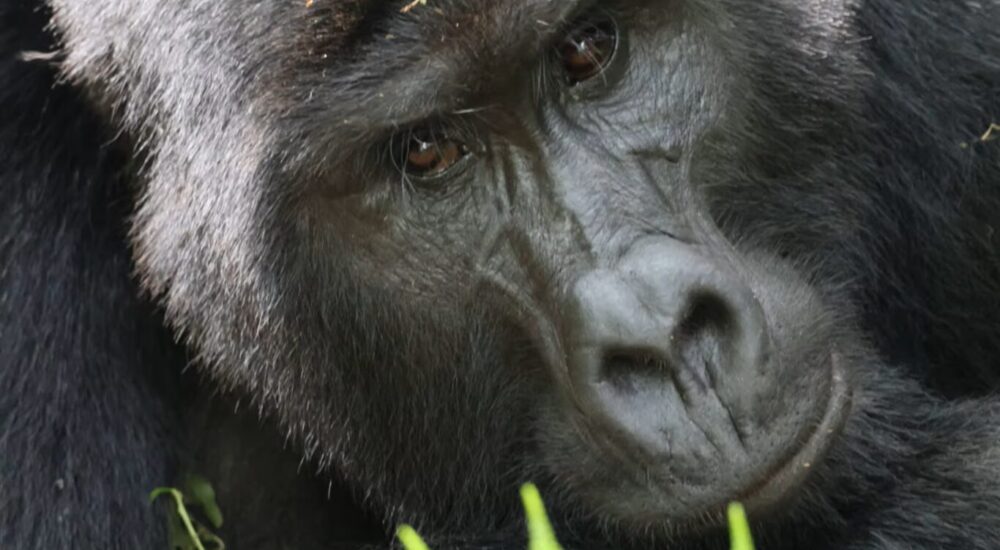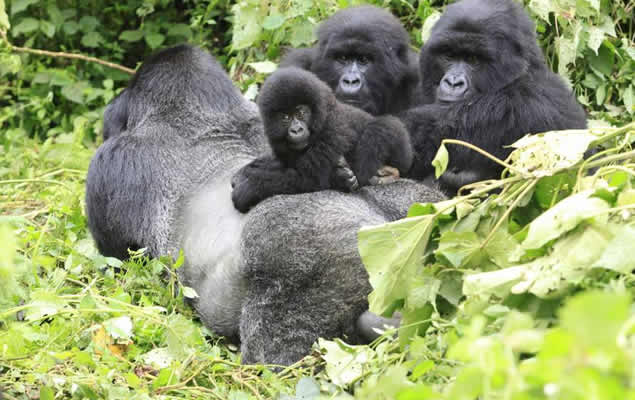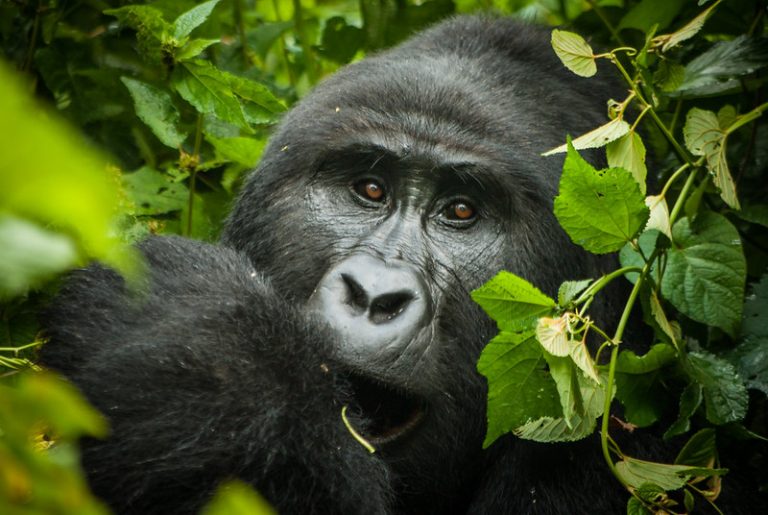What is Gorilla Trekking? Best Destinations for Family-Friendly Gorilla Trekking Preparing for Your Gorilla…
Queen Elizabeth National Park’s diversity and animals
Queen Elizabeth National Park is a treasure trove of all kinds! It is located in western Uganda and has diverse wildlife and flora. The Park is rich in wildlife, which is tucked away in many habitats and settings. Because of the diversity and species in Queen Elizabeth National Park, the topography and vegetation of the region vibrate with a natural rhythm and have the sensation of an African wilderness.
Queen Elizabeth National Park‘s vegetation.
Themeda trianda is by far the most common grass species, yet it is non-existent in waterlogged environments. Cymbopogon afronardus, acacia hockii, sporobulus pyramidalis, acacia gerradii, euphobia candelabrum (E.dawai trees), and Capparis tomentosa thickets are among the other grass species to arrive. Acacia sieberiana, acacia gerradii, ficus ficus, and ficus gnaphalocarpa are the most common tree species.![]()
Forested regions are scattered throughout the park. Maramagambo woodland is the queen’s largest forest, and it contains Uganda ironwood, cynomtra alexander, pterygota, pseudospondius, and treculia. Chimpanzees, L’Hoest’s Monkeys, Black and White Colobus Monkeys, Red Tailed Monkeys, Blue Monkeys, Vervet Monkeys, and Baboons are among the seven primate species found in the forest. In addition to the bat caves, the woodland is home to a large variety of birds and long columns of army ants.
Queen Elizabeth’s soils.
The park’s soils are alluvial, sedimentary, or volcanic in nature. Parts of the southern sector of the region, as well as the Mweya area, are dominated by two types of soil. North of Katwe are the kyamatoma catena soils, which are distinguished by shallow black clay loams. The soils of Ishasha are sandy loams and sandy clay loams.
Reptiles and amphibians have been observed at Queen Elizabeth National Park as part of the biodiversity.
Turtle with a soft shell, Tortoise with a Western hinge, Lizard monitor, Agama with blue skin, Skink, both red and black, Skink with side stripes, Skink with speckled lips, Skink with grey-black limbs, The Ugandan house gecko, Dwarf Black-throated Gecko, The common house lizard Lizard snake, Chameleon with three horns, Chameleon, lesser, Smaller chameleon in bright green, Chameleon pigmy, Snake worm, Python, Adder, Pudd Gabonese viper, The horned viper of Rhinoceros, Cobra with black lips, Spitting or black-necked cobra The Fold’s forest cobra Mamba of the forest, Tree snake or boomslang, Sun serpent, Snake of the vine or twig, Snake that burrows, Snake, file Night adder, slender green snake Night adder, velvety-green The western carter snake House snakes, wolf snakes, and marsh snakes are all types of snakes. Snake with white lips, Tod from Africa, Bull frogs, Clawed frogs, and plathanders are all examples of frogs. Tree frog, Sharp-nosed frog
Checklist of animals found in the park.
Over 95 animals may be found in Queen Elizabeth National Park. These are some examples:
Hyaena spotted, East African hedgehogs, hedgehogs Peter’s shrew, shrews Fruit bats, etc. Rousette fruit bat, Epauletted fruit bat Bats that eat insects Yellow-winged bat, White-bellied tomb bat Baboons and monkeys, Red-tailed monkey, Uganda blue monkey, and vervet monkey Baboon Olive, Red colobus, black and white colobus Apes, Chimpanzee with long hair, Temminck’s lesser pangolin, Ground pangolin These species are among the highlights of Queen Elizabeth National Park’s biodiversity
Dogs:
East African wild dog, side-stripped jackal African stripped weasel, badgers, and otters Ratel’s Zorilla (East African polecat) (honey badger,) African civet, Bush genet, African palm civet, viverrines Greater grey mongoose, Lesser slender mongoose, White-tailed mongoose, Banded mongoose, Marsh mongoose are all species of mongoose.
Cats:
Serval, Lion, Leopard, Aard-varks, African ant bear, or aard-vark
Hyraxes:
Elephants, African elephants, Hippopotamuses, Common hippopotamus, Rock hyrax, Tree hyrax
Pigs and hogs:
Wart-hog, African bush pig, Giant forest hog
Bovines:
Black buffalo from Uganda Common (or kavirondo) (or kavirondo,) Speke’s sitatunga, bush buck Yellow-backed duiker, Bush duiker, Blue duiker, Red duiker Waterbuck Defassa, Topi, Uganda kob, Bohor reedbuck Rabbits and hares, Porcupines, East African crested porcupine, East African hare Rats made of cane, Cane rat of Langer, Squirrels include the African tree squirrel and the Giant squirrel.
Mice and rats:
Harsh furred rat, Striped grass mouse, Unstriped grass mouse, Common swamp rat, Pouched mouse
Fish found in the park include:
Tilapia nilotica, Clarias lazera, Bagrus docmac, Protopterus aethiopicus, and Mormyrus cascive are among the species.
Early paleolithic implements discovered in the park.
Reconstructed bolas, Ishango harpoon, Bored stone, Scraper, Lunate, Transverse arrow head, Potsherd
The best time to visit Queen Elizabeth National Park.
The climate in the area is favorable. Because Queen Elizabeth National Park is so close to the equator, it has two rainy seasons and consistently mild temperatures all year. During the rainy season, the park is frequently wet from March to May and September to December. The park’s environment is generally gorgeous during this time of year, and there are opportunities to see migratory birds. The greatest time to visit the park, however, is during the dry season, which lasts from December to February and June to September.![]()
Bird watching, cultural/community experiences, chimp tracking in the Kyambura Gorge, game drives, boat safaris on the Kazinga Channel, lion experiential tourism, nature and forest walks are among the activities available in this park. Most of the diversity and species in Queen Elizabeth National Park may be seen on safari.


